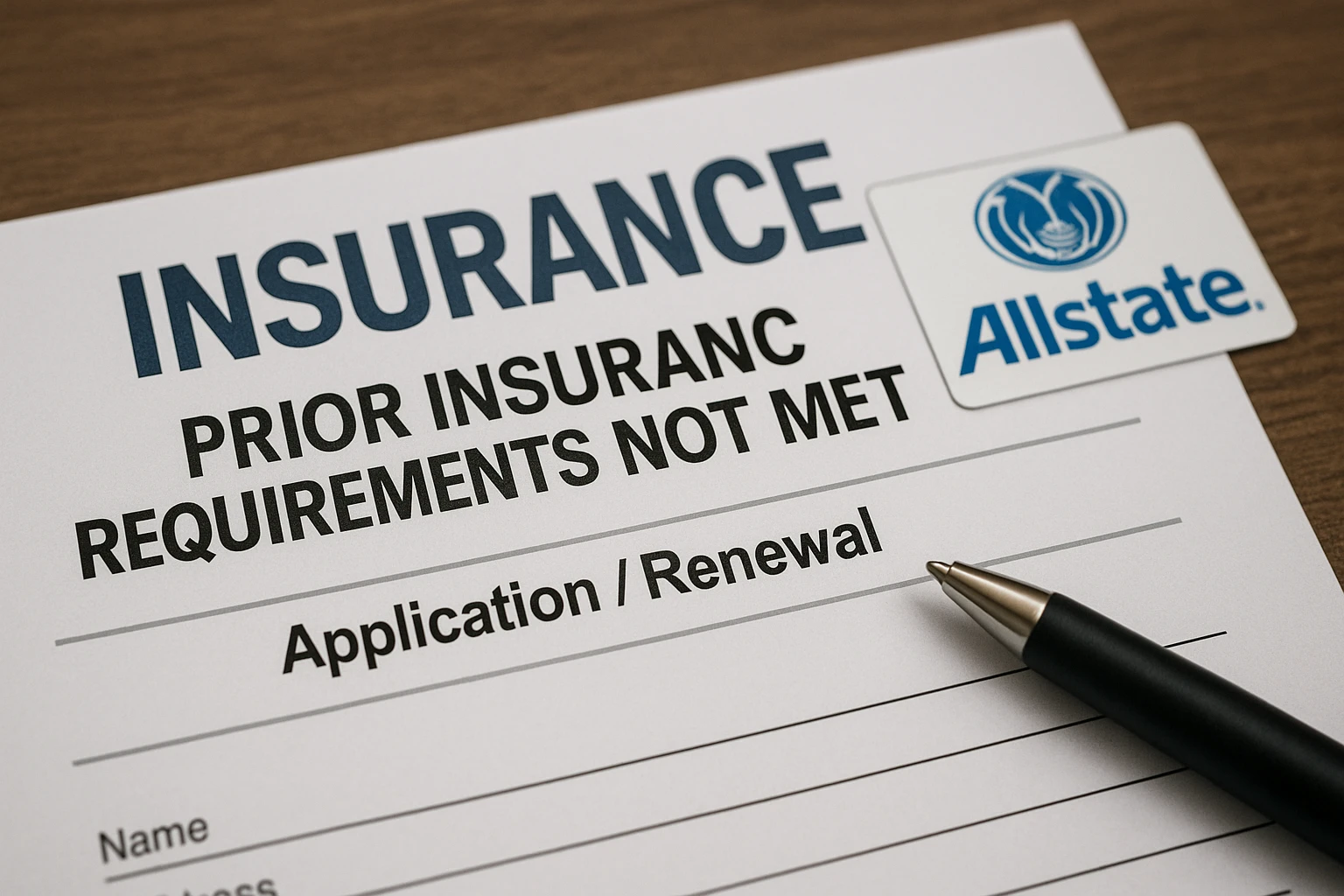Cash in Transit Insurance Explained – Coverage, Benefits & Cost (2025 Guide)
📑 Table of Contents
- What Is Cash in Transit Insurance?
- Why Is Cash in Transit Insurance So Important?
- Real-Life Example: A Risky Route
- What Does Cash in Transit Insurance Typically Cover?
- Coverage Inclusions:
- Optional Add-Ons:
- Exclusions to Watch Out For:
- Who Needs Cash in Transit Insurance?
- Industries That Commonly Use CIT Insurance:
- Small Businesses Aren’t Exempt
- How Does Cash in Transit Insurance Work?
- Tip: Maintain a Logbook
- Key Benefits of Cash in Transit Insurance
- 1. Financial Protection
- 2. Peace of Mind
- 3. Boosts Reputation
- 4. Compliance
- How to Choose the Right CIT Insurance Policy
- ✅ Evaluate Coverage Limits
- ✅ Check the Geography
- ✅ Reputation of the Insurer
- ✅ Flexibility & Add-ons
- Expert Insight: What Underwriters Look For
- How Much Does Cash in Transit Insurance Cost?
- Typical Annual Premium Range:
- Ways to Reduce Cost:
- Common Myths About Cash in Transit Insurance
- ❌ “I Don’t Carry Enough Cash to Worry About It”
- ❌ “My General Liability Insurance Covers It”
- ❌ “I Use a Secure Vehicle, So I Don’t Need It”
- Frequently Asked Questions (FAQs)
- What is the difference between money insurance and cash in transit insurance?
- Does CIT insurance cover third-party losses?
- Can I get coverage for international transit?
- Is CIT insurance mandatory?
- Google Featured Snippet Potential (Summary Box)
- Final Thoughts: Is Cash in Transit Insurance Worth It?
What Is Cash in Transit Insurance?
Cash in Transit (CIT) Insurance is a specialized policy designed to protect businesses from the risk of loss or theft when physical money—cash, cheques, or securities—is being transported from one place to another.
Whether it’s bank runs, delivery to ATMs, or retail cash pickups, this insurance acts as a safety net against the vulnerabilities involved in cash transportation.
Why Is Cash in Transit Insurance So Important?
The act of moving cash, especially in bulk, is inherently risky. Crimes such as armed robbery, hijackings, and internal theft have become more sophisticated.
According to the British Security Industry Association (BSIA), the UK alone records over 1,000 cash-in-transit attacks each year, costing businesses millions. Similar threats exist globally.
Real-Life Example: A Risky Route
In 2023, a well-known jewelry store in Chicago lost $1.2 million during a cash transfer to its bank. Despite hiring private security, the vehicle was ambushed. The investigation revealed that the attackers had inside information.
With a valid CIT policy, the store was able to recover the majority of its losses—highlighting the true value of this coverage.
What Does Cash in Transit Insurance Typically Cover?
Cash in Transit insurance isn’t a one-size-fits-all policy. The coverage varies, but here’s what it usually includes:
Coverage Inclusions:
-
Cash, cheques, or securities in transit between premises and bank
-
Robbery or theft during transfer
-
Loss due to fire or natural disasters during transit
-
Employee infidelity (within certain limits)
-
Accidental damage or loss
Optional Add-Ons:
-
ATM replenishment coverage
-
Overnight cash storage
-
Coverage while cash is on premises
-
Third-party transporter cover
Exclusions to Watch Out For:
-
Negligence (e.g., leaving vehicle unattended)
-
Fraud not involving physical theft
-
Loss due to war or terrorism unless explicitly covered
-
Delays in reporting the theft
Always read the policy wording carefully, especially the fine print on exclusions.
Who Needs Cash in Transit Insurance?
Any business handling large volumes of cash or valuables on a regular basis should consider this type of coverage.
Industries That Commonly Use CIT Insurance:
-
Retail stores and supermarkets
-
Banks and financial institutions
-
Jewelry and precious metals dealers
-
Event organizers (music festivals, exhibitions)
-
Security and courier firms
Small Businesses Aren’t Exempt
Even small businesses like restaurants or salons that deposit daily cash into banks can benefit. A single incident could jeopardize their financial stability.
How Does Cash in Transit Insurance Work?
The process is straightforward but must be clearly documented to avoid disputes.
-
Risk Assessment: The insurer will evaluate how and where your business transports cash.
-
Policy Issuance: You receive coverage based on transport frequency, value, and route.
-
Incident Reporting: If theft or loss occurs, report immediately with supporting documentation.
-
Claim Review and Settlement: Insurer investigates and pays out as per the policy terms.
Tip: Maintain a Logbook
Keeping a detailed log of cash-in-transit movements adds credibility during claims and helps speed up the process.
Key Benefits of Cash in Transit Insurance
1. Financial Protection
A single loss can run into thousands or even millions. This policy shields your business from devastating financial impacts.
2. Peace of Mind
Owners, staff, and couriers feel safer knowing there’s a backup in place. It encourages better morale and confidence.
3. Boosts Reputation
Clients feel more confident partnering with businesses that manage risk responsibly.
4. Compliance
In some industries, having CIT coverage is a regulatory requirement or part of your contractual obligations.
How to Choose the Right CIT Insurance Policy
Finding the right policy requires more than just comparing premiums. Consider the following:
✅ Evaluate Coverage Limits
Ensure the policy covers your highest transport values—not just averages.
✅ Check the Geography
Does your policy cover rural routes or only urban centers? Some insurers have geographical limits.
✅ Reputation of the Insurer
Choose companies with strong claims-handling history and high financial ratings.
✅ Flexibility & Add-ons
Opt for customizable plans that allow you to include overnight storage or cover for third-party services.
Expert Insight: What Underwriters Look For
Underwriters assess several risk factors before pricing a CIT policy:
-
Frequency of cash transfers
-
Amount per transit
-
Distance and routes
-
Use of armored vehicles
-
Security protocols in place
If your business lacks professional security or standard procedures, expect higher premiums or limited cover.
How Much Does Cash in Transit Insurance Cost?
Premiums vary depending on your business size, industry, frequency of transit, and security measures.
Typical Annual Premium Range:
| Business Type | Avg. Coverage Limit | Estimated Premium (USD/year) |
|---|---|---|
| Small retail store | $10,000 - $50,000 | $250 – $800 |
| Mid-size business | $50,000 - $200,000 | $1,000 – $2,500 |
| Armored courier firm | $500,000+ | $5,000 – $20,000+ |
Ways to Reduce Cost:
-
Use armored transport services
-
Limit transport frequency
-
Keep detailed transport logs
-
Install GPS tracking
Common Myths About Cash in Transit Insurance
❌ “I Don’t Carry Enough Cash to Worry About It”
Even $1,000 is worth protecting. Criminals don’t discriminate based on amount—they act on opportunity.
❌ “My General Liability Insurance Covers It”
Most commercial general liability policies exclude loss or theft during transit. You need specialized coverage.
❌ “I Use a Secure Vehicle, So I Don’t Need It”
Even armored cars are targeted. Security reduces risk but doesn’t eliminate it.
Frequently Asked Questions (FAQs)
What is the difference between money insurance and cash in transit insurance?
Money Insurance generally covers money in transit and on premises. Cash in Transit Insurance specifically covers the risk during transport.
Does CIT insurance cover third-party losses?
If you hire a courier or armored transport company, you can add third-party transporter cover to protect your cash while in their custody.
Can I get coverage for international transit?
Yes, but it’s more complex and expensive. You’ll need specialized international CIT coverage and may face higher scrutiny.
Is CIT insurance mandatory?
Not always, but banks, jewelry firms, and large retailers often require it contractually or as part of vendor agreements.
Google Featured Snippet Potential (Summary Box)
What is Cash in Transit Insurance?
Cash in Transit Insurance protects businesses from theft, loss, or damage to cash and valuables during transportation. It covers risks like robbery, employee theft, and accidents while transferring funds between locations.
Final Thoughts: Is Cash in Transit Insurance Worth It?
If your business deals with physical money transfers, you can’t afford to ignore this insurance. Whether you’re moving daily restaurant earnings or transporting gold bullion, the risk is real—and growing.
Insurance doesn’t just reimburse losses—it adds structure, credibility, and protection to your operations.
In today’s volatile business environment, smart protection isn’t optional—it’s essential.







Community Feedback